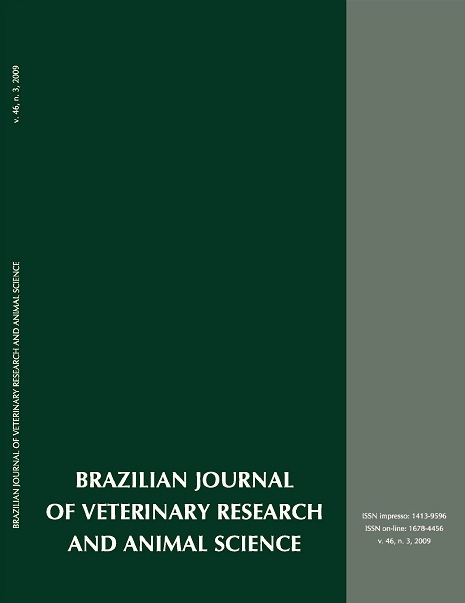Comparison of the broth microdilution technique and ETEST to ketoconazole front Malassezia pachydermatis
DOI:
https://doi.org/10.11606/issn.1678-4456.bjvras.2009.26770Keywords:
Malassezia pachydermatis, CLSI, ETEST, Broth microdilutionAbstract
Malassezia pachydermatis is recognized as a normal inhabitant and an opportunistic pathogen of the external ear canal and skin of dogs and cats. In special clinical conditions, and mainly in the cases of therapeutic failure related to external otitis and dermatitis complicated by this yeast, is recommended testing susceptibility to antifungal drugs. Different approaches of evaluating the susceptibility of yeasts faced to antifungals in laboratory exist, some of them are commercial approaches and others previously standardized by the CLSI (NCCLS, 2002). The purpose of this study was to evaluate the susceptibility of 17 samples of M. pachydermatis from canine external otitis using two different in vitro antifungal susceptibility methods: the Etest® and the broth Microdilution Method (MD) with ketoconazole. The mean MIC observed between the 17 samples were 0.103mg/mL to ETEST and 0.0012mg/mL to MD ranging from 0.004 to 0.75mg/mL in ETEST and 0.0019 and 0.03mg/mL in MD using the same samples. By ETEST, two (11.8%) samples were resistant, eight (47.1%) susceptible and seven (41.1%) showed intermediate susceptibility. Through the MD it was observed four (23.5%) resistant samples, seven (41.2%) susceptible and six (35.3%) samples with intermediate susceptibility. Despite of the percentages being equivalent in each rank of susceptibility through the two techniques, the results do not correspond to the same sample. These results showed that there is an urgent need to standardize those values considered as parameters for growth inhibition of this yeast. Then a simple and efficient method could be used routinely in the laboratory practice.Downloads
Download data is not yet available.
Downloads
Published
2009-06-01
Issue
Section
UNDEFINIED
License
The journal content is authorized under the Creative Commons BY-NC-SA license (summary of the license: https://
How to Cite
1.
Nascente P da S, Cleff MB, Meinerz ARM, Xavier MO, Schuch LFD, Meireles MCA, et al. Comparison of the broth microdilution technique and ETEST to ketoconazole front Malassezia pachydermatis. Braz. J. Vet. Res. Anim. Sci. [Internet]. 2009 Jun. 1 [cited 2026 Jan. 17];46(3):222-7. Available from: https://revistas.usp.br/bjvras/article/view/26770





